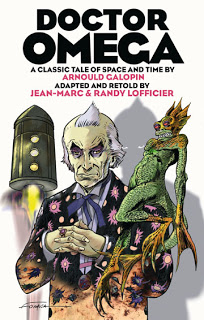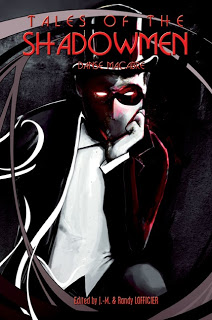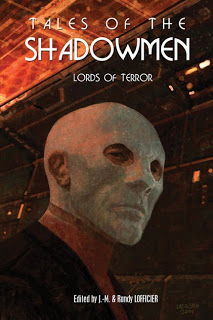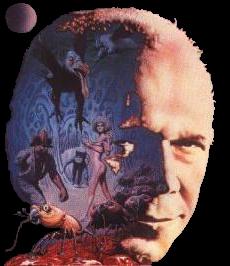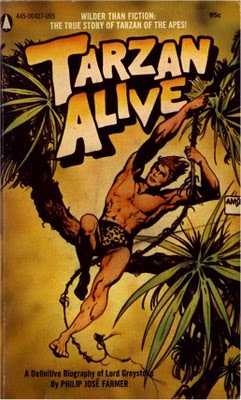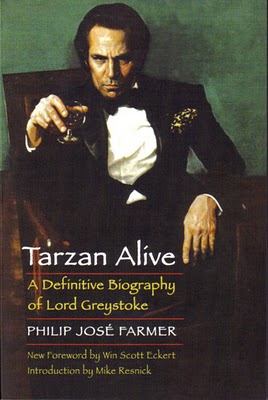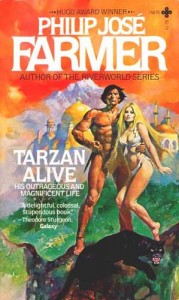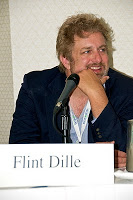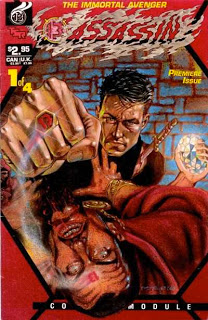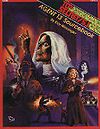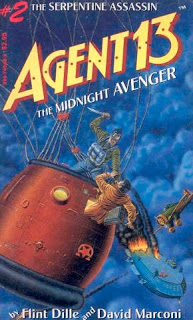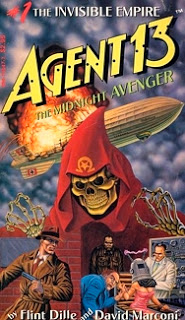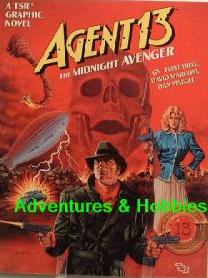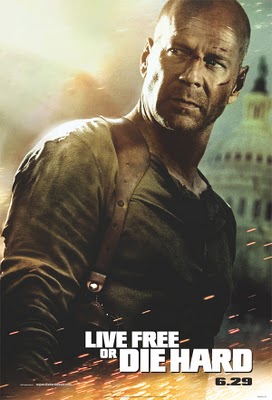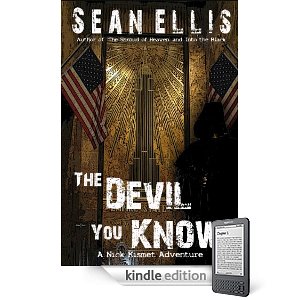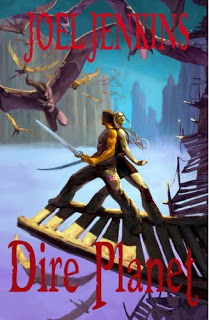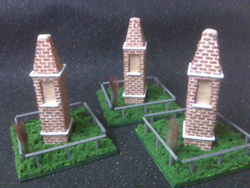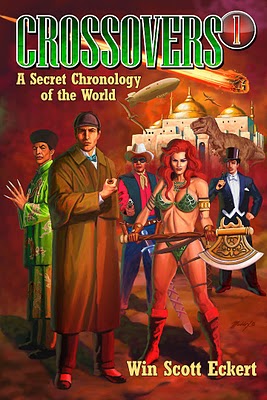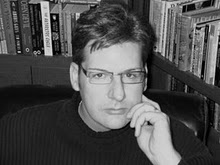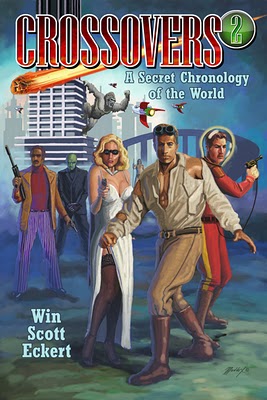Author: Tommy Hancock
A FAN RESPONDS TO WOLD NEWTON DAYS WITH HIS OWN REMEMBRANCES OF PJF!
MISS LAST WEEK’S BOOK CAVE? THEN LISTEN TO IT NOW!
12/9/10
THIS WEEK ON THE BOOK CAVE!! The Book Cave Episode 104: Tom Johnson Takes A Tunnel Through Space!
Ric is joined by Tom and Ginger Johnson and their publisher, Barbara Custer. Art is out this week due to a meeting with fellow witchdoctors. ;-) Art joins Ric after the show to talk about the award they recently won. After that is the All Pulp news with Tommy Hancock.
WIN SCOTT ECKERT’S INTRODUCTION TO PJF’S ‘TARZAN ALIVE’!
Foreword to Philip José Farmer’s
Tarzan Alive: A Definitive Biography of Lord Greystoke
(University of Nebraska Press Bison Books, 2006)
by Win Scott Eckert
Win Scott Eckert © 2006-2010
“This is a biography of a living person.”
So states Philip José Farmer in his foreword to Tarzan Alive and in so doing follows the Sherlockian tradition in which the object of the fictional biography is treated as a real person. Sherlockian biographical scholarship (commonly called the “Game”) arose as a response to a myriad of discrepancies in Watson’s writings of the master detective Sherlock Holmes. In the Sherlockian Game Holmes’s amanuensis, Dr. Watson, is also treated as a real person. As Dr. Watson narrates the cases, Arthur Conan Doyle is relegated to the status of Watson’s “editor.”
Game players then write critical essays that resolve the chronology of the Sherlock Holmes canon and otherwise provide explanations for inconsistencies in Watson’s work. Sometimes the inconsistencies are explained as resulting from Watson’s carelessness, whereas in other instances we are told that Watson deliberately changed certain details, times, and names to protect innocent parties and prevent delicate information from being uncovered through his writings.
Occasionally Game players go so far as to research and write complete biographies of their subjects. Some of the better-known examples are William S. Baring-Gould’s Sherlock Holmes of Baker Street and Nero Wolfe of West Thirty-Fifth Street, C. Northcote Parkinson’s The Life and Times of Horatio Hornblower and Jeeves: A Gentleman’s Personal Gentleman, John Pearson’s James Bond: The Authorized Biography of 007 and Biggles: The Authorized Biography, Anne Hart’s The Life and Times of Hercule Poirot and The Life and Times of Miss Jane Marple, and Philip José Farmer’s Doc Savage: His Apocalyptic Life, which serves as a companion piece to Tarzan Alive.
Lesser-known instances of the genre include The Life and Exploits of the Scarlet Pimpernel by John Blakeney, The Flying Spy: A History of G-8 by Nick Carr, The Wimsey Family by C. W. Scott-Giles, Radio’s Captain Midnight: The Wartime Biography by Stephen A. Kallis, Jr., and John Steed: An Authorized Biography, Volume 1: Jealous In Honour by Tim Heald.
These fictional biographies, to varying degrees, share the same characteristics; they all:
discuss and resolve inconsistencies in the canon of the character’s novels, stories, or adventures
provide a timeline of the character’s life (either as a formal chronology, or merely through a discussion of the timing of certain events)
provide information on the character’s family tree and forebears
treat their subject as a real person.
What, then, sets Tarzan Alive apart from other fictional biographies? Tarzan Alive is patterned on Baring-Gould’s biographies of Sherlock Holmes and Nero Wolfe. Edgar Rice Burroughs is cast as a writer who became privy to the real-life Tarzan’s adventures but altered certain details and names in order to protect the real Lord Greystoke’s identity and family. Farmer provides a chapter-by-chapter breakdown of Burroughs’s Tarzan novels, as well as an addendum with a summary timeline of key events in Tarzan’s life. He explains discrepancies in the Tarzan canon, such as the mystery of how Korak aged, seemingly overnight, between The Beasts of Tarzan and The Son of Tarzan. Tarzan Alive also offers information on Tarzan’s forebears.
What distinguishes Tarzan Alive from other fictional biographies is the level of detail with which Farmer imbues his subject and with which he dares us to disbelieve. Farmer has not simply studied Tarzan—Lord Greystoke’s—life; he has actually met and interviewed Greystoke. Farmer has not only identified a few of Tarzan’s forebears; he has spent uncounted hours poring over Burke’s Peerage in an effort to uncover his real name, titles, and arms. Farmer has not merely discovered other real-life personages who are distantly related to Tarzan (such as Lord Byron); he has uncovered a plethora of other ostensibly “fictional” characters to whom Tarzan is related in a massive and complex family tree—and provided a cosmic explanation for the almost superhuman nature of these characters’ adventures and abilities: the ionized radiation of the Wold Newton meteorite, resulting in the Wold Newton family.
The roster of Farmer’s Wold Newton family is nothing if not bold. In addition to Tarzan and Doc Savage, other members include Solomon Kane (a pre-meteor strike ancestor); Captain Blood (a pre-meteor strike ancestor); Harry Flashman; Sherlock Holmes and his nemesis Professor Moriarty (aka Captain Nemo); Phileas Fogg; the Time Traveler; Allan Quatermain; Rudolf Rassendyll; A. J. Raffles; Wolf Larsen; Professor Challenger; Arsène Lupin; Richard Hannay; Bulldog Drummond; Doctor Fu Manchu and Sir Denis Nayland Smith; G-8; Joseph Jorkens; the Shadow; Sam Spade; the Spider; Nero Wolfe; Mr. Moto; the Avenger; Philip Marlowe; James Bond; Lew Archer; Kilgore Trout; Travis McGee; and many more. In a dazzling display of non-canonical revisionism, Farmer even goes so far as to place Fitzwilliam Darcy and Elizabeth Bennet (from Jane Austen’s Pride and Prejudice) and Sir Percy Blakeney (from Baroness Emmuska Orczy’s The Scarlet Pimpernel) at the actual Wold Newton meteor strike in 1795.
Farmer’s creation of the Wold Newton family elevated the fictional biography genre to a whole new level. Instead of focusing on one particular character, Game players following in Farmer’s literary archaeological footsteps now determine how to extend and build upon Farmer’s original family tree in an ongoing series of essays, timelines, and crossovers.
One of the first such forays into post-Farmerian Creative Mythography (as Farmer termed the Wold Newton Game in Doc Savage: His Apocalyptic Life) was The Wold Newton Meteoritics Society’s Wold Atlas fanzine (1977-78). The Wold Atlas included genealogical essays, a serialized novel, and original illustrations and ran for five issues. A few essays inspired by Farmer’s Wold Newton concept appeared in the 1980s and 1990s in various pulp-oriented publications such as The Bronze Gazette, Nemesis Incorporated, and Pulp Vault.
However, it took the Internet to coalesce a second wave of Creative Mythography with the 1997 publication of the first Wold Newton Web site, An Expansion of Philip José Farmer’s Wold Newton Universe, or The Wold Newton Universe (http://www.pjfarmer.com/woldnewton/Pulp2.htm). By last count there are fourteen
sites that have at least some Wold Newton material on them. Of these, about seven or eight are focused exclusively on the Wold Newton universe. The revived interest in Wold Newton studies has even spawned a new anthology of essays devoted entirely to the concept, Myths for the Modern Age: Philip José Farmer’s Wold Newton Universe (MonkeyBrain Books, 2005), with contributions by Farmer himself and several other scholars, writers, and pop culture historians.
Though readers may come to Tarzan Alive through a love of Edgar Rice Burroughs’s Tarzan—a love deeply shared by Farmer—in finishing the story of Tarzan’s life, they gain something more than a mere retelling of the Jungle Lord’s adventures. Tarzan Alive shines brightly in the unusual subgenre of fictional biographies because it creates a whole world of interacting super-characters outside our window. Farmer makes you believe not only that Tarzan is real but that all the other characters are as well, because he inextricably weaves their history and Lord Greystoke’s together.
Which brings us full circle. “This is a biography of a living person.”
When Farmer interviewed Tarzan on September 1, 1971, the Lord of the Jungle was in his mid-eighties but looked about thirty-five. There’s no reason to doubt that Tarzan is still alive today. Indeed, in the intervening thirty plus years several more of the ape-man’s adventures have been revealed. In various comic book adventures the Jungle Lord has been crossed-over with the rest of Edgar Rice Burroughs’s major creations. He has traveled to Barsoom and met John Carter; visited Burroughs’s Amtor (Venus) via astral projection; fought Burroughs’s Moon Men in the twenty-fourth century; journeyed to the Land That Time Forgot, Caspak; and returned to Pellucidar again and again (once he even fought the Predators there). Tarzan has also encountered Frankenstein’s Creature, Dr. Jekyll and Mr. Hyde, and perhaps most remarkably, the Golden Age Batman!
In the mid-1970s, western writer J. T. Edson played on Farmer’s background for Lord Greystoke from Tarzan Alive, giving Tarzan another adopted son named Bunduki and sending the rest of the Greystoke clan to live in Pellucidar. However, yet another comic book revival saw Tarzan and Jane living back on the surface world in the late 1980s and early 1990s. Joe R. Lansdale completed a Burroughs manuscript, returning the Jungle Lord to the 1940s in Tarzan: The Lost Adventure. But readers of Tarzan Alive will likely be more intrigued by yet another contribution from Philip José Farmer. In 1999 he finally realized his dream of writing an authorized Tarzan novel with the publication of The Dark Heart of Time. True to form, Farmer took a barely hinted-at incident and fleshed it out into a complete “lost adventure” taking place between the events of Burroughs’s novels Tarzan the Untamed and Tarzan the Terrible.
Perhaps most fascinating of all is Farmer’s time-travel novel, Time’s Last Gift. The main character, John Gribardsun, travels back in time from the year 2070 to 14,000 BCE. Inexplicably immortal, he lives a full life for 14,000 years until the year 2140 when he and his wife—Jane—depart Earth in a cryogenic sleeper spacecraft bound for the star Capella and new adventures. If Gribardsun is who we think he is (readers have speculated that the abbreviation of Time’s Last Gift, TLG, provides a significant clue to Gribardsun’s identity), then the Jungle Lord’s motto—“I still live!”—takes on new meaning.
In Tarzan Alive Farmer convincingly demonstrated that there is a real pulp fiction universe just waiting to be explored. His boundless imagination keeps Tarzan alive forever, both figuratively and literally, and in so doing, Philip José Farmer will also always still live.
ALL PULP INTERVIEWS AGENT 13 SCRIBES DILLE AND MARCONI!
All Pulp’s Flint Dille and David Marconi interview
Note: the following interview with authors Flint Dille and David Marconi were conducted separately and compiled into a single interview by All Pulp.
AP: Welcome, gentlemen. Please tell us a little about yourselves and your pulp interests.
FD: Pulp was one of those things that I always knew was out there, but never really saw it until I was an adult. My father had a book called ‘The PULPS(Fifty years of American Pop Culture” or something by Tony Goodstone who had some connection with his ‘The Collected Works of Buck Rogers in the 25th Century project, so I knew the word and liked the lurid covers. I’d read bits and pieces of it when I was younger, but always in things like Conan reprints. I didn’t know it was a genre or that it came from disreputable magazines, it was always just sort of there.
As an adult, I started looking for it after Raiders of the Lost Ark came out. I wanted more like that. I knew that Pulp and old Radio Shows and Cliffhanger serials were all related. Pulps dated better because of the technical and budgetary limitations of the serials and the radio shows. (Though I listen to Classic Radio on XM and am constantly amazed by how good some of it is). In any case, when I talk about pulps, I’m referring to this Transmedia blur in my head of magazines, serials, radio shows, comic strips and paperback novels.
Anyway, one year at ComiCon I found some pulp mags sitting in an old bin while I was busy re-buying my childhood. You could buy non-pristine off-brand for $5 at the time. I loaded up on secret societies, lost cities, dangerous women, chthonic monsters, masked crime fighters and never looked back. It was about then that I realized that I was much more familiar with the pulps than I knew I was: Phillip Marlowe, the Shadow, The Phantom, Tarzan and all sorts of familiar characters came from the pulps. I liked the off brand ones the most for some reason, Operator #5, Secret Agent X, the Spider.
So I came home from ComiCon, probably 1985, with a pile of pulp stuff. Dave was crashed at my couch around that time, and we sat around reading the falling apart magazines and decided we’d take a film story we’d been pitching around do our own pulp. Our story was kind of Indiana Jones meets James Bond. I conned Gary Gygax into publishing the books at TSR. The movie pitch got us both writing jobs at Amblin’, but nobody put it into development.
DM: For me, the 20s, 30’s and 40s have always been a period of great interest. Good and evil were seen more in terms of black and white and the pulps became an extension of that world. The people who populated that world were also larger than life in many ways – much more interesting than the grayness of today’s world. The Pulps also reminded me of the Saturday morning action pictures my parents would take me to see at an early age. Many of the scripts I write today are a further extension of that world as well.
AP: What does pulp mean to you?
FD: I love pulp. Its pure entertainment. In its heyday it was non-literary stuff written by often extremely literate people who were being paid by the word. It was churned out fast, and you can feel it – in a good way. Nothing is labored, its pure inspiration, fully charged and loaded. I guess the best analogy in my mind is that its like a live concert as opposed to a studio album. No months of navel pondering, no rethink, just right there, right out and at its best you can almost feel the energy of some guy writing in a white heat trying to make a deadline.
It never occurred to me until this moment. Right now as I’m typing this, that at the time I was working in that tradition. I was working in the disreputable medium of animation. We were cranking out Transformers and G.I. Joe and Inhumanoids and Visionaries at an amazing rate, it was the kind of sprinting marathon that I get the feeling Robert E. Howard worked in. You can’t have written as much as he did and died at such a young age if you spent a lot of time meditating on each word. The thing that’s wonderful about Pulp is that you have beautiful, poetic lines side-by-side pure cliché. It’s not about crafting the words, its about always cutting to the visceral moment. I was also working on the Sagard books with Gary Gygax at the time, and even though they were ‘fight a path’ game books, they were heavily influenced by the pulps.
And we haven’t even mentioned the cover artwork. I have Pulp of the Day (http://www.pulpoftheday.com/) on my Google page. They reprint the covers from the old and mostly forgotten pulps. You look at those covers and you want to read the story. Doesn’t matter if it’s a western, and in captivity, I don’t even read westerns or a spicy mystery or a G-8 and his Air Aces, you’re sucked in.
Pulps also filled a hole in my understanding of the origins of two important American genres (and pulps are truly and deeply American): The Hard Boiled Detective and the Superhero. Something with the ‘reality’ of our world, but with a hint of the magic of comics – kind of like the way ‘Uranus’ was found by deduction (‘there must be something there’). Of course, it was staring me in the face. When I was in 6th Grade, poised on that magical precipice between childhood and adolescence, The Green Hornet was my favorite show. It wasn’t the show itself, as much as what I felt the show could be: the Black Beauty cruising the rain-slicked streets at night, a fence with a breath mint ad splitting apart, a secret world right inside ours.
What I didn’t know at the time, but somehow intuitively understood was that I was seeing a transitional hero – a guy who wore regular clothes and a mask who fought crime by night and ran a newspaper by day. The villains were mobs and gangs and the occasional themed enemy, but they didn’t have any powers. Nobody did. Nobody wore costumes that they couldn’t ditch in two minutes. Nobody had rays shooting out of their eyes. In short, I could grow up to be this guy. Those heroes wouldn’t stay around for long. They would, inside a generation go through a mutational mitosis process into, on one side guys in spandex (though spandex didn’t exist then) and on the other side private eyes in suits with no mask.
The Green Hornet, some iterations of the Shadow, the Spider, Operator #6 and Secret Agent X all existed somewhere on the edge of reality in that minute when we believed that you could throw on a mask and nobody would know your identity.
I love the artifice of pulp. The suspension. Sometimes you see pulp in real life. The North Hollywood Bank Robbers were simultaneously a modern phenomenon and something out of pulp. Masked men spreading terror, robbing banks and going down bad. The cops were larger-than-life heroes. Its like, for an hour, the rules of the real world were suspended.
DM: Ground up paper.
AP: As a writing team, you worked on three Agent 13 novels and Flint worked on two graphic novels with the character. Tell us a bit about Agent 13, his pulp connection, and what drew you to this character.
FD: Yeah. And we did a radio show that you can post if you have the bandwidth. It was a lot of fun. One day, we decided, ‘lets’ make an Agent 13 radio show.’ Next thing I knew, we had a recording studio of sorts, a mixer and sound effects guy, some actors (Dave played Walter Winchell), Peter Nelson, who was my executive at Sony Pictures on a film this year (not supposed to say what it is), played Itsu. Bill Winter played the Narrator. I think I played somebody, but can’t remember. We also did a year of TSR Comics Modules called 13 Assassin written, I believe mostly by Roger Slifer one of the other Producers on Transformers, and TSR did a game module for Top Secret on Agent 13. He had a great life.
DM: The book was born out of a “pitch” that Flint and I had put together and taken around to the studios to try and set up as a screenplay gig. A pitch is where you walk into a room filled with a bunch of bored studio executives and try to entertain them enough with your verbal story that they will open their wallets and actually pay you to than write the script.
After making the rounds to the various buyers, we had some nibbles but no bites. But what we did have was a fully flushed out story with characters. So Flint and I looked at each other and said why don’t we just write the books as Flint’s sister had just acquired TSR and we had access to their Random House deal. And once we started, we couldn’t stop.
AP: There are different approaches when two writers work together on a novel. What was the process like in writing these novels as a team?
FD: Damn. It was a long time ago. Maybe Dave remembers better than I do. I remember that he was in Lake Geneva for a long time doing a lot of heavy lifting (both our families live on the North Shore of Chicago and TSR was up in Lake Geneva about 45 minutes away. I remember writing a lot of it up in Carmel in a place called the Cypress Wordshop, and in a converted stable up at the Dungeons & Dragons mansion in Beverly Hills.
DM: We discussed and laid out the story together for the pitch. Once we decided to proceed with the books, Flint did his pass on the material. I then took what he had done, and went off to expand it a bit and do my version of it. So the stories became a mashup up of our two minds. Flint is great at coming up with the “outrageous,” truly unique idea. My strengths are taking his ideas, grounding them in a reality, and making them somehow believable. Thus we each compliment and bring something unique to “the table” so to speak.
AP: I’ve heard rumblings about the possibility of an Agent 13 movie. Any news you can share on this? Who would you like to see play Agent 13 and why?
FD: Yeah. Not sure what we can say about the movie right now. Let’s say that we’re in ‘deal mode’ right now. It’d be great to see that happen. But the movie interest, which came out of nowhere, did wake us up.
DM: Yes, there is renewed interest after all these years. Seems the project has come full circle in some strange way. Christian Bale, Russell Crowe, Daniel Day Lewis. I’ve always enjoyed them as actors and believe they truly have the abilities to become many different personalities in many different guises, which is what the character of 13 calls for.
AP: The original Agent 13 novels were released in the 1980’s. Any chance we may see these stories re-released? Are there plans for new Agent 13 books?
FD: Yes. The books are on Amazon Kindle right now and there is talk of re-releasing the Graphic Novels drawn by Dan Spiegle and a special book with all three novels, which are, more or less a continuity. Steve Forde at GoHero has done a great prototype figure. I’m also looking around for the rough draft of Overlords of the Underworld, which was the un-completed fourth novel that Mike Hill was working on. Yeah. It might be fun to do another Agent 13 novel at some point.
DM: I’ve heard some rumors. They are also currently available for Kindle download via Amazon.
AP: You have both had experience writing prose and screenplays. Can you explain to our readers some of the differences and similarities between writing for film and animation as opposed to novels and comic books? Does each simply work a different creative writing muscle?
FD: Novel writing is a marathon. There’s no set length, and it is truly a writer’s medium. Animation and screenwriting are very similar. Comics are a whole thing unto themselves as far as I’m concerned. Movies are about doing a story in time. Comics are about doing them in space – on a page. Very complex medium for somebody with no art skills.
AP: What do Flint Dille and David Marconi do when they’re not writing?
FD: Dave lives the perfect writer/director life. You never know what continent he’s on. He’s frequently seen with extraordinarily beautiful women and driving flashy cars. In fact, come to think about it, he might be Agent 13. I, on the other hand, live in Los Angeles, have two kids and live a much more mundane life.
DM: For me, it’s traveling to as many off-beat places that I can where I try live as full a life as possible. This feeds directly into my creative process and keeps me challenged on many levels and from getting stale or bored so to speak.
AP: Where can readers find learn more about Flint Dille and David Marconi and your work?
FD: Good question. Right now, I’m spread out all over the internet. I just discovered an interactive movie I directed in the 90’s there. One of these days I’m going to consolidate all of this glop somewhere for one big narcissistic Flint page.
DM: Not sure.
AP: Any upcoming projects you would like to mention?
FD: Unfortunately, everything I ever work on is NDA’d and you don’t know what you can say. I will say that, for good or for bad, that a lot of things I’m doing right now hearken back, one-way or the other, to the ‘80’s. I can talk Agent In Place which is over at Lionsgate. It was a game design doc that they bought as a movie. Also, I’m working on Sorcery at Sony. Oh yeah, and a book about Transmedia as a follow up to the Ultimate Guide to Videogame Writing and design.
DM: I just adapted a screenplay from 4 French graphic novels that Luc Besson is planning to do this summer. Right now the project is called THE BOUND but that title will most probably change. I have another movie I wrote that will be shot called DARK SIDE OF THE MOON, it was adapted from the Swiss novel by Martin Suter. That film will be directed by Oliver Hirschbiegel (DOWNFALL). Then I have my own pet-project, an original film I hope to get up and running this coming spring called; INTERSECTION which I plan to shoot in Morocco. I’m also writing two more movies for two European based companies. I do this to keep busy and fill in the time while I wait for things to happen.
In this business, there is a lot of “waiting for things to happen.” Things are happening when they’re actually up and running and the checks clear the bank. So my advice here is to keep producing and never wait around for things to happen or the phone to ring.
AP: Are there any upcoming convention appearances or signings coming up where fans can meet you?
FD: I’m speaking at a Transmedia Conference in Melbourne, Australia in January, but that’s a long swim for most people. There’s talk of my speaking at BotCon. Somebody ought to start up a PulpCon and have it in some old building in L.A.
DM: For me, no.
AP: David, you wrote the story that was the basis for Live Free Or Die Hard. How did the story, originally titled WW3.com, become the fourth film in the Die Hard series? In your initial story, was this a Die Hard movie? If not, is taking an existing story and molding it to fit pre-established characters a normal Hollywood situation?
DM: I had just completed ENEMY OF THE STATE and was hired by FOX to turn a WIRED MAGAZINE article; “A FAREWELL TO ARMS” by John Carlin, into a script FOX had optioned. After several drafts, the script I wrote; WW3.COM, was green-lit for a summer-action movie and they were looking for a big-name director. Then 9/11 occurred and the film was shelved, as no one wanted to make films about terrorism. Then several years later DIE HARD came along. They had struggled through several expensive ideas/scripts that they had commissioned and none of them hit the mark or delivered. Then someone at FOX remembered my script,WW3.com, which they owned and was sitting on a FOX shelf somewhere. So they pulled it off the shelf, hired a writer to re-tool/mold it, and turned my script into the next DIE HARD installment. The political aspects of my story were gutted out, but the action-story remained, as well as the characters. John McClane (Bruce Willis), Matt Farrell (Justin Long) and Thomas Gabriel, (Timothy Olyphant) all became mash-ups of the original characters I created for WW3.com. Such is the life of the writer. At the end of the day, you’re happy if the script gets made as so many in the studio-grind are tossed in the bin, never to be seen, or heard of, again. Is it the “norm” how my script was adapted into a franchise picture? No, but FOX owned my script outright as they commissioned it and were thus free to do with it as they saw fit.
AP: David, we often hear the story of writers or actors who go on to direct. You came about this in a different order, is that correct? How did you start your filmmaking career?
DM: I made my first “film” when I was 11. My father, who was the original inventor of “shaky cam” which later became a very successful technique for commercials to sell everything from soap to dog-food. I grabbed the camera and started shooting. That led to USC film school, working for Coppola on OUTSIDERS, RUMBLE FISH, and then onto a career of writing and directing. I must admit, it’s been a bit of a back and forth between the directing chair and the keyboard, but I’ve always stuck with it. Both offer different rewards. I love the freedom that writing provides, but I also love the ability to follow-through on the original vision of the story – and watch the characters come to life through the process.
AP: And finally, gentlemen, what advice would you give to anyone wanting to be a writer?
FD: Probably the same thing they hear everywhere. Do it every day. Put in your 10,000 hours (see Malcolm Gladwell’s Outliers). Finish projects. Get them out there through any available means. Tenacity is the greatest virtue you can have. Luck is good, too. But to some extent you make your luck.
DM: The SECRET to writing is to write. It’s a pain in the arse, no doubt, but if you do it enough, eventually someone will respect you enough to pay you to do it.
AP: Thanks, gentlemen.
ALL PULP NEWSSTAND BULLDOG EDITION 12/14/10
ELLIS ANNOUNCES KISMET THRILLER READY FOR KINDLE!
Kismet’s search for the shadowy Prometheus group turns a corner when he receives an invitation to meet a mysterious informant. But instead of answers, he finds a beautiful reporter, hunted by vicious kidnappers and a fallen priest wielding the unholy power of the Judas Rope.
Also includes Bonus Material of excerpts from The Shroud of Heaven, as well as the next Nick Kismet adventure…Into the Black!
” …I finished writing Lost Tribes of the Dire Planet and it now stands at 128,000 words of pure pulp sword and science fiction. This books ran somewhat longer than the other Dire Planet novels as I had a multitude of plot threads and story lines which needed some resolution.
Between Strange Gods of the Dire Planet and Lost Tribes of the Dire Planet I’ve been living on the Dire Planet for over a year. Now the hard work begins–the brutal editing and revision process. Because the two novels are closely knit together I’ll be editing them consecutively before submitting them to Pulpwork Press–after which they will undergo yet further editing.
Strange Gods is slated for a 2011 release and Lost Tribes of the Dire Planet for a 2012 release. Of course, the first three Dire Planet books are available at PulpWork.com, Amazon, and Barnes and Noble.”
JOHNSON’S LATEST BOOK TAKES PULP INTO CLASSIFIED TERRITORY!
 |
| Cover of COLD WAR HEROES |
 |
| Interior Art |
And as a closing to WOLD NEWTON DAY- plus A WOLD NEWTON ANNOUNCEMENT!
A Little Wold Newton
by Michael Croteau
Here is a case of some extreme Wold Newton geekery. In the summer of 2009, my family and I vacationed in England, along with Win Scott Eckert and his wife. We mostly stayed with Paul Spiteri and his family outside of London. During our two weeks on the island, we of course made a pilgrimage to visit the Wold Newton Monument. We even stayed at the Wold Newton Cottage (highly recommended by the way).
After we returned back home to Georgia, my wife, who is one of the most creative people you’ll ever meet, decided to make a memento of our trip. Something we could look at that would instantly trigger pleasant memories of our vacation of a lifetime. She even decided to make three of them, one for us, one for the Eckerts and one for the Spiteris. The result was the three wonderful miniature Wold Newton Monuments you see below. You can click on the picture for a larger file to see more details.
You can also click here to see one of the models, next to the photo is was based on, and some random book to show scale.
Ok, my wife insists I take credit for helping her with these. While she did the planning, purchasing of materials, and all the construction, I did do my part too. Notice the extremely realistic looking mortar between the bricks, yup that was me. It takes a steady hand to paint down in those small cracks like that. But it was a lot of fun, and certainly the most artistic thing I’ve done since, well, junior high school art class…but we don’t really want to talk about that incident.
AND THE ANNOUNCEMENT!
The response to ALL PULP’s Wold Newton Days has been extremely phenomenal! Multiple writers have contributed work, as you have seen, but even more so, we have had record viewing these last three days (right at 2000 views in three days and counting)! Because of this and since we still have material to share, ALL PULP is extending the Wold Newton celebration all week long! Every day this week, ONE Wold Newton related item will be posted, so you can get your Wold Newton on once a day for the next week! And all our usual pulpy goodness to boot!!!
Thanks to all the fans who made Wold Newton days a success and to all the scholars and writers who made it possible at all. And thanks to Philip Jose Farmer for daring to look for the links….
HANCOCK TIPS HIS HAT WOLD NEWTON STYLE!!
TIPPIN’ HANCOCK’S HAT-Reviews by Tommy Hancock
CROSSOVERS: A SECRET CHRONOLOGY OF THE WORLD VOLS. 1 & 2Writer-Win Scott Eckert
Covers by Mark Maddox
I need to explain some things.
First, this is a review of one title, CROSSOVERS, that is made up of two volumes. The review will address the entire body of work.
Secondly, I am an information junkie. A fact finder. A minutiae monster. And, probably most of all, a crossover collector and connection maker. This fact is important to explain why I have the opinion of these books I do as well as just who these books are written for, in my opinion.
Win Scott Eckert, accomplished writer as well as pulp and fiction scholar, tackled what would to most anyone else not just be a daunting difficulty, but an impossible mission. Essentially Eckert’s premise for CROSSOVERS relates to the Wold Newton Family/Universe concept. Wold Newton refers to an idea that all sorts of fictional characters from every medium from movies, television, pulp magazines, comic books, radio, etc. are intertwined, many of them being descendants of people who were present at a meteor strike in England near the village of Wold Newton. This idea, originally posited by noted writer and icon Philip Jose Farmer, has been adapted, adopted, researched, and written both about academically and used in stories as well by a host of writers over the years, Eckert leading among them.
What are these two volumes about? The history of an universe where Holmes and Tarzan meet and are related, where aliens landed millions of years hence, where H. G. Wells’ Time Traveler left his mark on more than the future, and where pulp heroes (as well as all other sorts of good and bad guys and gals) hung out, fought together, and had connections beyond just being fictional characters.
Done chronologically, CROSSOVERS tells a grand epic. Actually, it encompasses multiple epics, hundreds and hundreds of story arcs, and thousands of scenes between characters that never met in their original incarnations possibly, but should have been tied together from the very beginning, and in some instances, were linked, even if it were accidental. Starting six million years before Christ and going into the far flung future, Eckert lays out a geneaology, not simply of families present at Wold Newton, but a geneaology of an entire universe, where it started, where it went, and of multiple possible ways it would end.
The amount of information Eckert squeezes into these pages is outstanding. Not only are there hundreds of characters, both well known and barely remembered, mentioned, but Eckert goes to great detail in his notations to make sure the reader is aware of the source of each character, from whence they sprang, as well as the ways each character’s history has been augmented, changed, or revised. This appeals so much to the information junkie in me because I now have not only tons of characters that I can work with, draw inspiration from, and include in my ideas and such, but I also have a guidebook to use to track down reams and reams of stories that I never knew existed, much less read.
These books are meant for people who enjoy literature as well as the debate of literature, that being did Holmes live well past his creator and could The Shadow and The Spider have really been brothers and just who is Judex, and on and on ad infinitum. Writers and artists seeking ideas and inspiration must have CROSSOVERS. Fans of pulp and probably any other literary genre should seriously consider picking up this book. If you’re trying to introduce a reader, though, to a new genre, like turning someone on to pulp, this isnt the collection for them. It requires a taste for the characters and doesn’t provide much introduction material for a ‘non fan’. Also, the entries are sometimes long and cumbersome to read, which requires the reader to want to have the information, to work their way through it. This is not Eckert’s fault, but moreso simply a weakness of any such work that dares to not only encompass so much information, but also make sure the reader has that information.
The cover art by Mark Maddox sets off these books wonderfully. When you pick one up, you not only know what you are getting, but the joy and wonder of seeing your first Holmes or Flash Gordon cover happens all over again. Maddox truly captures on the outside what Eckert performs on the inside.
CROSSOVERS will always be near to hand for me as a writer and open and ready to help me as a reader find what wonders I have missed. This is not only a great effort by Eckert, but a true accomplishment.
Four out of Five Tips of Hancock’s Hat (usually reserved for heads of state, arresting officers, and little old ladies, which is pretty darn good.)
WOLD NEWTON MUSIC!!!!!
Many writers and creators have been inspired by Wold Newton in many ways. John Allen Small has carried that inspiration one step further, composing a piece of Wold Newton inspired music!! Follow or paste the link below to hear Small’s “Carriage Ride at Wold Newton”!
![]() http://www.badongo.com/file/24810668
http://www.badongo.com/file/24810668

